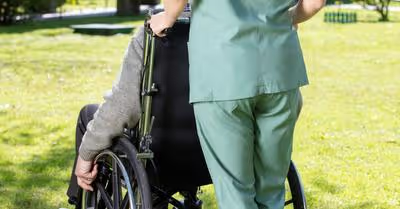Table of Contents
Types of Levels of Care
Although assisted living is generally regulated by state laws, most states choose not to dictate levels of care within the assisted living industry. This, therefore, means that each facility can outline what entails each level of care. In most cases, many assisted living facilities offer two or three levels of care. Let's elaborate more on what we've just highlighted above.
Level 1
Also known as low-level care, level one is generally meant for residents who need minimal support or assistance with their ADLs. Whether it's easting, bathing, walking, or dressing, they can do most of their ADLs without assistance. These residents have no acute memory loss, are independent, and will not hesitate to make their preferences known.
Although they may need little help with things such as their buttons, they are generally independent and will perform their tasks with little or no supervision. They will take care of their hygiene, can manage their toileting needs, and can feed themselves. As such, all the nurses need to do for these residents is to manage their medications, test their blood sugar levels, and perform other medical tests, though these residents are not in urgent need of constant or round-the-clock medical monitoring.
Generally, residents who are admitted to an assisted living facility should be able to perform most ADLs without support or assistance or a caregiver or nurse. Some of the ADLs that the resident must be able to perform may include using the bathroom, walking/transferring, feeding oneself, dressing, and proper maintenance of bowel and bladder continence. Although the caregivers are not required to administer medications to the residents, they can provide medication reminders to the residents who require medication.
Level 2
This level of care is meant for residents who require more hands-on assistance for the caregivers or nurses at the assisted living facility. While the residents at level 2 care may carry certain ADLs such as feeding, they may not bathe or dress. They may walk or wheel themselves from one place to another but they may need help with bathing, dressing, or managing their toileting and incontinence.
Generally, residents of level 2 care may show certain signs of memory loss and may require physical or verbal cues and reminders to manage their ADLs more effectively. In addition to supervision that may be provided by the caregivers, these residents may require comprehensive assistance in managing their chronic issues or medical monitoring.
Another feature of level 2 care is that they cannot admit residents who are completely incontinent, bedridden, or unable to move around independently. Although caregivers cannot provide services to bedridden residents, they are permitted to administer medication to the residents.
That's not all; level 2 care must have distinct wings for residents who receive a nursing home level of care and those who do not. Level 2 care must employ licensed practical nurses, personal care aides, and certified nursing assistants. You should also keep in mind that Level 2 care is very different from level 1 care in the sense that level 2 care can have their nursing care covered by Medicaid.
Level 3
Sometimes referred to as memory care, level 3 care is a higher level of care that's designed for seniors living with dementia and Alzheimer's disease. Their situations are at an advanced level and they generally require extensive help with their ADLs and may require round-the-clock medical and general supervision.
The assisted living facilities that offer level 3 type of care should offer environments that help seniors who have memory loss to feel at home. Caregivers should have specialized training in dementia care.
How to Know the Level of Care that You Need
The most important thing when looking for the right level of care provided at an assisted living facility is to talk with your family and caregivers about the services that you need. Some of the questions that you should answer include:
What can I or cannot do?
How often will I need help?
Why do I want to change my living arrangements?
You should also get to look at the type of assisted living facility that may be within your budget.
Recent Articles
















